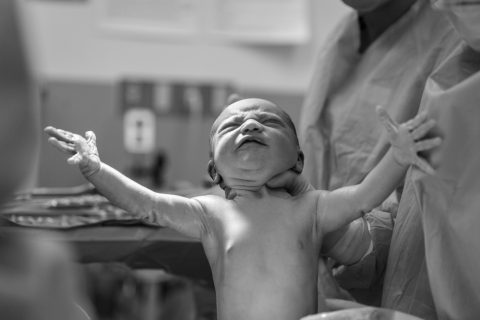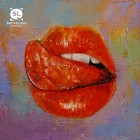Can you describe the initial impulse that led to the writing of “Werewolf”?
I wish I could remember the original impulse, although I do know I was reading Marilynne Robinson and thinking about rural communities—how they can be so filled with horror and loveliness at the same time. “Werewolf,” in truth, went through many phases of editing (and a lot of cutting), so I suppose there was more of an impulse to whittle and weather the piece than there was to create it.
What makes “Werewolf” a work of flash fiction and not a prose poem? Are the genres mutually exclusive?
I don’t see much of a difference, necessarily. To me, the best writing is the mysterious, slippery kind that avoids easy classification.
This piece has a beautiful sound to it when read aloud. Does rhythm and musicality often play such a prominent role in your work? If so, how are they important?
First, thank you for the kind words. And to answer your question: yes. I often think of Don DeLillo’s interview in The Paris Review where he discusses how he is drawn to rhythm more than narrative. I grew up in a fairly musical household—my father, in his younger years, was a jazz musician—and a desire to create appealing sentences probably seeps into my work.
As for why it’s important: I would argue the musicality of language and sentence is not just important, but vital in contemporary literature. The one trait that sets fiction apart from other narrative mediums is its potential to use language in engaging, rigorous ways. If a writer ignores this, and focuses on narrative alone, they might as well go make a movie. And I’m not saying it means every piece of fiction needs to be dense and lyrical. An attention to the written word can look different in a variety of ways. But nonetheless, I often ask myself when reading a piece of fiction: Why does this have to be a book? a microfiction? a novel? After all, you could get more people to engage with it if you chose almost any other form.
As a piece of art, where does “Werewolf” fit in our current moment in time?
I would hope that in some extremely small way it challenges our culture’s obsession with labels, especially our tendency to label individuals as monsters, as othered.
Can monster imagery stand on its own in literary writing, or should it always symbolize something else?
On one hand, I think there is this already-tired movement in literature right now, which I like to call “The Babadook Effect,” where every single monster needs to be a heavy-handed metaphor, when it should be, for the most part, left alone. On the other, I think monsters spring from our collective sense of the uncanny, and in that regard, the monster will always symbolize something else—whether we intend it to or not. Either way, I am always in favor of more monsters. If contemporary writing has a mortal sin, it’s that in an attempt to be “literary” (whatever that means), it often ends up stuffy and boring. And it’s hard to be boring when you have a monster running through the text.



 The core workshop of SmokeLong Fitness is all in writing, so you can take part from anywhere at anytime. We are excited about creating a supportive, consistent and structured environment for flash writers to work on their craft in a community. We are thrilled and proud to say that our workshop participants have won, placed, or been listed in every major flash competition. Community works.
The core workshop of SmokeLong Fitness is all in writing, so you can take part from anywhere at anytime. We are excited about creating a supportive, consistent and structured environment for flash writers to work on their craft in a community. We are thrilled and proud to say that our workshop participants have won, placed, or been listed in every major flash competition. Community works.